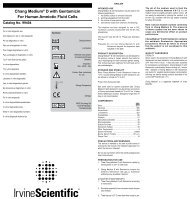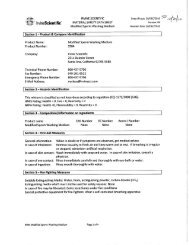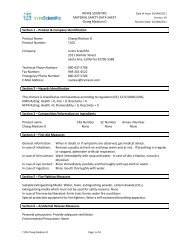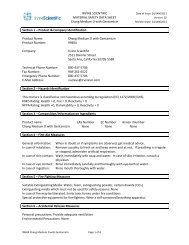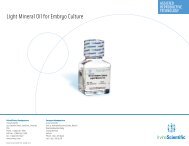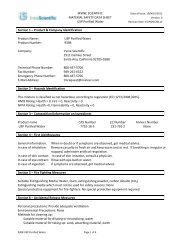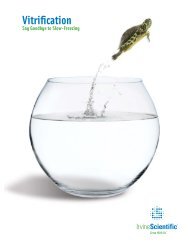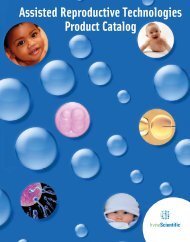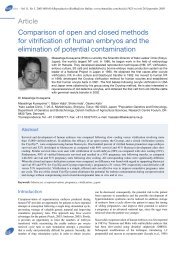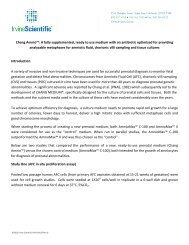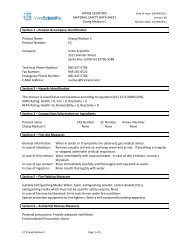Mycotrim® RS - Irvine Scientific
Mycotrim® RS - Irvine Scientific
Mycotrim® RS - Irvine Scientific
You also want an ePaper? Increase the reach of your titles
YUMPU automatically turns print PDFs into web optimized ePapers that Google loves.
B. Colony appearance<br />
Do not use an inverted microscope.<br />
When a color change occurs within the first 72 hours, colonies<br />
are usually visible microscopically. A conventional light<br />
microscope with a low power (10x) objective lens and 10x<br />
eyepiece, or a good quality dissecting microscope with 70x to<br />
100x magnifying capability is adequate. It will be necessary<br />
to adjust the stage or nosepiece of the microscope to accommodate<br />
the depth of the Mycotrim <strong>RS</strong> flask.<br />
In specimens with very high or very low titers of ureaplasma,<br />
it may be possible to observe a color change and be unable to<br />
see microscopic colonies.<br />
To examine the flask for M. pneumoniae colonies:<br />
1. Place the flask, agar side up, on the microscope stage as<br />
indicated in Figure 3. Focus through the flask and agar<br />
to the inside surface of the agar. The cut made during<br />
inoculation marks the area inoculated and aids in focusing.<br />
2. Scan the length of the flask along both sides of the cut for<br />
colonies.<br />
AGAR<br />
BROTH<br />
10x<br />
Figure 3<br />
3. Examine suspected colonies by focusing up and down<br />
on them . Colonies may grow on the agar surface or<br />
penetrate below the agar surface. Colonies growing in the<br />
agar may not appear in sharp focus.<br />
English 7/10



